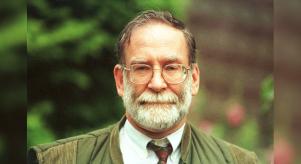
Does Zac Efron's film, glamorise Ted Bundy?
If it wasn’t crass to say a serial killer, who brutally attacked, sexually violated and murdered young women was having a moment, then you could say it about Ted Bundy. 30 years after his death and he’s the subject of a docuseries on Netflix and of an upcoming film: Extremely Wicked, Shockingly Evil, and Vile.
On the flip side of this is Zac Efron: the former Disney star, tween heartthrob turned Hollywood actor, whose torso you could almost certainly wash your clothes on, that has been cast to play him. Here’s the question, though: why has he? By casting a contender for People magazine’s2017 Sexiest Man Alive, are filmmakers glamorising a prolific murderer? The trailer alone shows him taking his shirt off. Where do the moral and ethical boundaries lie?
It’s not the first time there’s been such disconnect between actor and subject. In My Friend Dahmer, another Disney alum Ross Lynch was cast as Jeffrey Dahmer— a man who could be considered to be good looking and who could also be considered to look like abloated fish. Lynch falls squarely into the former category. You get the reasoning: the actors cast off their bubble-gum persona, while audiences are graced with an aesthetically appealing take on unpalatable subjects (Dahmer, in case you needed the reminder, ate the men he killed).
In the case of Extremely Wicked, Shockingly Evil, and Vile, the argument goes that Bundy was charming and attractive. He was the ‘All-American Boy’ as one reporter said at the time. Efron himself described Bundy as someone he “could have perhaps been friends with,” which isn’t the takeaway you would expect. But then, wasn’t that Bundy’s main tactic: using his charm and looks to win people over?
One of Bundy’s victims, Kathy Kleiner Rubin said something similar whenspeaking about the film, saying she 'doesn’t have a problem with people looking at it,' that the glamorous view of Bundy is what people saw at the time, how he got them to trust him. She added that 'the film does glorify him more than I think he should be,' but that she wants people 'to understand him as what he was, even when he was the perfect son.'
So has this version crossed the line or is it all in the name of accurate storytelling?
We know Ted Bundy was good looking (Netflix had totweet and ask viewers of its series Confessions With a Killer: the Ted Bundy Tapes to stop calling Bundy hot or “waste of a baby daddy”); we know he was intelligent, articulate and charismatic. This is what allowed him to deceive the people that were close to him, to allow him to work next to Ann Rule (a true crime author who was, at one point, investigating Bundy’s murders) and for her to consider him a friend. This film isn’t the first to showcase that. You can also argue that by casting Efron, it’s simply portraying how a monstrous serial killer was able to deceive those around him, how he managed to get those young girls to help him to his car when he was using crutches and a leg cast.
Bundy didn’t look the way we’d like a necrophilic serial killer to look'
But here’s what we also know: he confessed to killing 30 women and it’s thought he could have killed over 100. Some of those were young girls. He snuck into the homes of students and attacked them. He bludgeoned girls with metal poles and lead pipes while they were asleep in their beds. He sexually violatedMargaret Bowman with a bottle and almost ripped off one of her nipples. We know he was a necrophile, revisiting his victims’ dead bodies to rape them again, until they were too decomposed to do so. He decapitated his victims. He kept the heads of 12 of them, washed their hair and applied makeup to them and then sexually violated them again. What about those victims? Aren’t they owed something more than this? You can’t help but wish the filmmakers had remembered their own title— Extremely Wicked, Shockingly Evil, and Vile—and reflected it a bit better. As writer and actor Broti Gupta put it: 'We all deserve to be haunted by Ted Bundy's victims.'
Bundy didn’t look the way we’d like a necrophilic serial killer to look: preferably visibly evil with that word tattooed on his forehead so there could be no confusion. He also didn’t look like an anthropomorphised Ken toy, either. Making Efron’s Bundy slightly less Baywatch wouldn’t have made him any less convincing. It’s hardly beyond Hollywood’s scope: you only need to take a look at Charlize Theron’s performance as Aileen Wournos in Monster to know it can be done. You’ve got to ask: why wasn’t it? It would have told the same story, without overly glamorising it.
Is it glamorising him? Yes, it is. That’s nothing new. People have been romanticising Bundy and other serial killers for years. The glasses he wore as a disguise, which he is thought to have been wearing in 1978 when he abducted 12-year-old Kimberley Leach (a girl whom he later raped and murdered), have justsold for $50,000. Extremely Wicked, Shockingly Evil, and Vile isn’t responsible for that. But after watching Efron grin and wink into the camera in the trailer, while ‘America’ Most Notorious Serial Killer’ flashed on the screen, I could almost be convinced to get on board with his Bundy. You can only imagine how thrilled the actual Bundy would have been to know he’s the subject of so much attention all over again. “I’ll be heard,” he once said. And he has been: over and over again.
Bundy’s dead; so are the majority of his victims. The ones we owe a responsibility to are the 30 to 100 plus children and women that were murdered and the few that were left alive but permanently affected, not the vicious murderer that did it. Let’s stop giving Bundy what he’d want: a young, hot Zac Efron playing him with the best abs Bundy never had.




